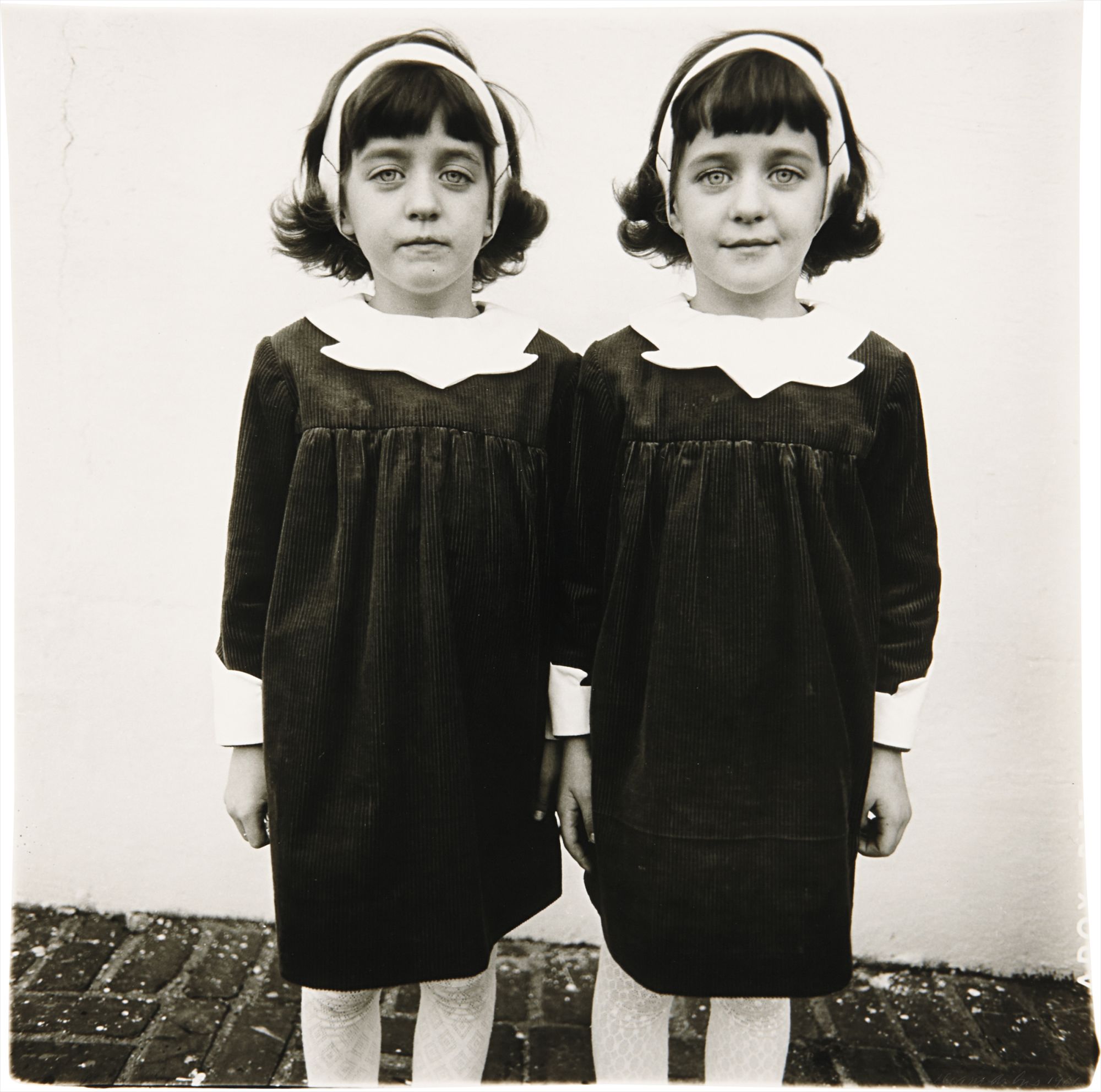

IMPORTANT PHOTOGRAPHS FROM THE COLLECTION OF DR. ANTHONY TERRANA
28
Diane Arbus
Identical Twins Cathleen (l) and Colleen, Roselle, N.J.
1966
Gelatin silver print.
15 x 14 3/4 in. (38.1 x 37.5 cm)
Signed and dated in stylus on the recto; signed, titled and dated in ink on the verso. Accompanied by a signed postcard from Diane Arbus to Penny Ray.
Full-Cataloguing
Diane Arbus’s interest in those who had been relegated to societal margins began in 1960, the year she watched Tod Browning’s 1932 movie, Freaks. Her attraction to those straying beyond the manicured borders of normalcyintensified over the years, especially following her exposure to the social cataloguing photographs of August Sander as well as her meeting Joseph Mitchell, a writer for The New Yorker who has once declared: “Born freaks are the aristocracy of the sideshow world.” The subjects in Arbus’s subsequent works— bearded ladies, transsexuals, midgets, a giant, and as seen in the current lot, twins—were carefully selected for their outsider status, which further empowered Arbus’s own sentiment as an outlier.
By the time Arbus’s work was first shown at the Museum of Modern Art in March of 1967 as part of the New Documents exhibition curated by John Szarkowski, she openly expressed her magnetism to the subversive: “I’ve spent the last eight years—which is how long I’ve devoted full time to my photography—exploring—daring—doing things I’d never done before—things I’d fantasized about as a child—going to circuses…sideshows.” The show at MoMA garnered tremendous attention, which greatly satisfied Arbus at first. In an interview with Newsweek magazine that was conducted at the time of the exhibition, Arbus noted about the twins: “I thought how ordinary is a charming pair of twins. In some societies twins are taboo, an aberration.”
Indeed, behind Arbus’s eye the twins are presented in a manner that is jarring as it is endearing. Employing her as astute eye, Arbus was able to look beyond the identical set of young girls whose likeness was accentuated by their matching attire and hairdos, presumably by their parents, to present their underlying individuality and normalcy. Indeed, a prolonged meditation in front of the image slowly unfolds a number of discrete differences between the two— in the brow, smile, eyes, pattern of their stockings, and in the posture—to reveal two distinct personalities. Their image is one that epitomizes Arbus’s work for successfully depicting what Arbus biographer Patricia Bosworth termed “the freakishness in normalcy, the normalcy in freakishness.” In doing so, Arbus successfully circumvented the normalized preponderance to stare and objectify outliers and instead skillfully presented them with a caring, sympathetic eye, devoid of judgment or bias.
By the time Arbus’s work was first shown at the Museum of Modern Art in March of 1967 as part of the New Documents exhibition curated by John Szarkowski, she openly expressed her magnetism to the subversive: “I’ve spent the last eight years—which is how long I’ve devoted full time to my photography—exploring—daring—doing things I’d never done before—things I’d fantasized about as a child—going to circuses…sideshows.” The show at MoMA garnered tremendous attention, which greatly satisfied Arbus at first. In an interview with Newsweek magazine that was conducted at the time of the exhibition, Arbus noted about the twins: “I thought how ordinary is a charming pair of twins. In some societies twins are taboo, an aberration.”
Indeed, behind Arbus’s eye the twins are presented in a manner that is jarring as it is endearing. Employing her as astute eye, Arbus was able to look beyond the identical set of young girls whose likeness was accentuated by their matching attire and hairdos, presumably by their parents, to present their underlying individuality and normalcy. Indeed, a prolonged meditation in front of the image slowly unfolds a number of discrete differences between the two— in the brow, smile, eyes, pattern of their stockings, and in the posture—to reveal two distinct personalities. Their image is one that epitomizes Arbus’s work for successfully depicting what Arbus biographer Patricia Bosworth termed “the freakishness in normalcy, the normalcy in freakishness.” In doing so, Arbus successfully circumvented the normalized preponderance to stare and objectify outliers and instead skillfully presented them with a caring, sympathetic eye, devoid of judgment or bias.
Diane Arbus
American | B. 1923 D. 1971Transgressing traditional boundaries, Diane Arbus is known for her highly desirable, groundbreaking portraiture taken primarily in the American Northeast during the late 1950s and 1960s. Famous for establishing strong personal relationships with her subjects, Arbus' evocative images capture them in varied levels of intimacy. Whether in their living rooms or on the street, their surreal beauty transcends the common distance found in documentary photography.
Taken as a whole, Arbus' oeuvre presents the great diversity of American society — nudists, twins, babies, beauty queens and giants — while each distinct image brings the viewer into contact with an exceptional individual brought to light through Arbus' undeniable genius.